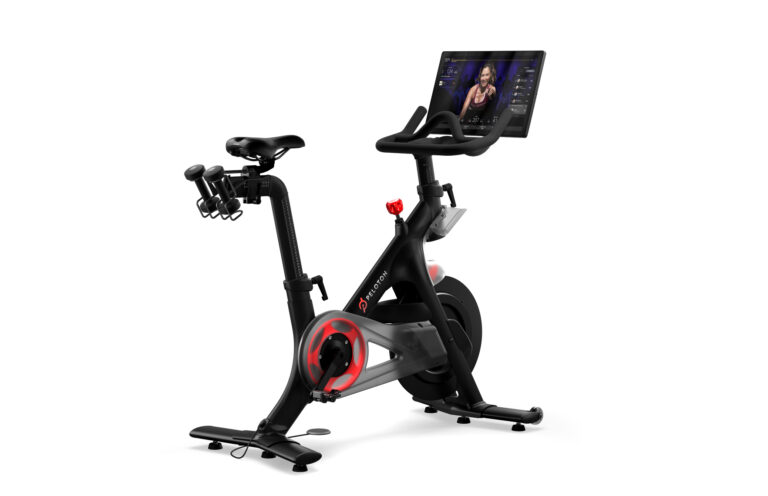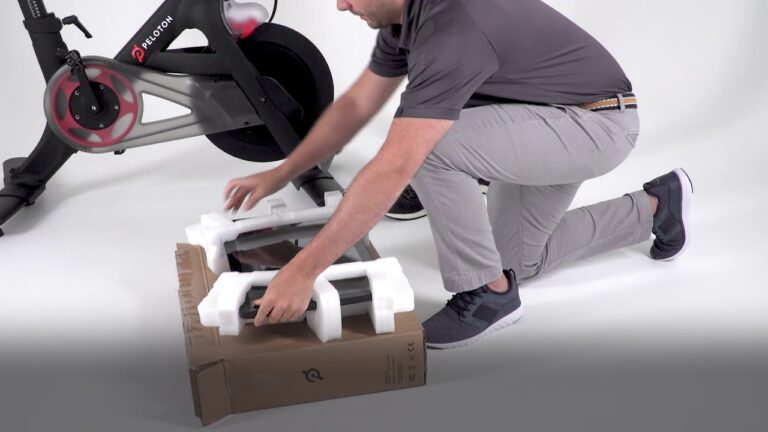What Is A Good Peloton Output? Tips for Optimal Performance
A good Peloton output is measured in watts and increases with higher cadence and resistance. It is an important metric for tracking progress and overall performance.
Understanding Peloton Output
Peloton Output: Definition and Importance
Peloton output refers to the average power output measured in watts during a Peloton workout. It is a crucial metric that provides insights into your fitness level and progress over time. Understanding your Peloton output can help you set goals, track your performance, and make improvements to your workouts.
When it comes to your Peloton output, it’s essential to aim for a good output that challenges you while still being sustainable. A good Peloton output can vary depending on various factors such as your fitness level, body weight, age, and the duration and intensity of your workout. Here’s a breakdown of what constitutes a good Peloton output:
Peloton Output for Beginners
- For beginners, a good Peloton output may range between 50 and 100 watts. As you start building your fitness level, aim to gradually increase your output over time.
- Remember that everyone’s fitness journey is unique, so don’t compare your output to others. Focus on your progress and celebrate every milestone.
Peloton Output for Intermediate and Advanced Riders
- For intermediate riders, a good Peloton output typically falls between 100 and 200 watts. As you gain more experience and strength, you can push yourself to achieve higher outputs and challenge your limits.
- Advanced riders often have Peloton outputs beyond 200 watts and can sustain high outputs for longer durations. However, it’s important to emphasize that your output goals should be tailored to your individual capabilities and growth.
Keep in mind that your Peloton output is not the sole indicator of your performance. It’s just one piece of the puzzle, along with other metrics like cadence, resistance, and heart rate. It’s crucial to find a balance between pushing yourself and ensuring a safe and sustainable workout.
To reach a good Peloton output, focus on consistency in your training, gradually increasing the intensity, challenging yourself with different classes and instructors, and listening to your body’s cues. Remember that everyone has their starting point, and the journey towards a good Peloton output is a personal one. Celebrate your progress, stay committed, and have fun during your Peloton workouts!+

Credit: www.pcmag.com
Factors Affecting Peloton Output
Factors Affecting Peloton Output When it comes to measuring your performance on the Peloton bike, the most important metric to track is your output. Peloton output refers to the average power output, measured in watts, that you achieve during a class. The higher your output, the more energy and effort you are exerting. There are several factors that can affect your Peloton output. Understanding these factors and how they influence your performance is crucial in improving your output and pushing your limits. In this article, we will explore two key factors: cadence and resistance.Cadence and Output: Finding the Sweet Spot
Cadence refers to the speed at which you pedal. It is measured in revolutions per minute (RPM). Finding the right cadence is essential in achieving optimal output. When your cadence is too low, you may feel like you’re exerting a lot of effort, but not getting the desired power output. On the other hand, if your cadence is too high, you may sacrifice power for speed. To find the sweet spot for your cadence, consider your fitness level and the type of class you are taking. For beginners, starting with a lower cadence and gradually increasing it as you gain strength and endurance is recommended. Intermediate and advanced riders can aim for a higher cadence to challenge themselves and push their output.Resistance and Output: Balancing Intensity and Efficiency
Resistance plays a significant role in determining your output. It refers to the difficulty level or intensity of your workout and is adjusted using the resistance knob on the Peloton bike. The higher the resistance, the more effort you need to exert to maintain your cadence and achieve a higher power output. Finding the right balance between resistance and cadence is key to maximizing your output. Too little resistance may result in a higher cadence but a lower power output. On the other hand, too much resistance can make it difficult to maintain your cadence and result in a lower output as well. Experimenting with different resistance levels during your rides can help you find the optimal balance for your output. Listen to your body and adjust the resistance based on your comfort level and the goals you have set for yourself. Remember, it’s about finding the sweet spot that challenges you without sacrificing efficiency. In conclusion, understanding the factors that affect your Peloton output, such as cadence and resistance, is crucial in improving your performance and reaching your fitness goals. Finding the right balance between these factors will help you achieve a good output and make the most out of your Peloton rides. Keep experimenting, challenging yourself, and pushing your limits to continuously improve your output and take your fitness journey to new heights.Strategies For Increasing Peloton Output
When it comes to maximizing your Peloton output, there are several key strategies you can incorporate into your training routine. By focusing on building endurance, tracking progress, and optimizing form and technique, you can effectively increase your output and take your Peloton workouts to the next level.
Building Endurance: Interval Training and HIIT Workouts
One of the most effective ways to improve your Peloton output is by building your endurance through interval training and high-intensity interval training (HIIT) workouts. These types of workouts involve alternating periods of intense effort with periods of active recovery. By pushing yourself to your limits during the high-intensity intervals, you can train your body to sustain higher levels of effort, leading to increased output.
Here are some strategies to incorporate interval training and HIIT workouts into your Peloton routine:
- Choose classes that specifically focus on interval training or HIIT workouts.
- Gradually increase the duration and intensity of your high-intensity intervals over time.
- Experiment with different work-to-rest ratios to find what works best for you.
- Monitor your heart rate and use it as a guide to adjust your effort level during intervals.
Tracking Progress: Setting Goals and Monitoring Performance
In order to increase your Peloton output, it’s important to set specific goals and regularly monitor your performance. This allows you to track your progress over time and make adjustments to your training as needed. Here are some strategies for setting goals and monitoring your performance:
- Set SMART goals: Make sure your goals are specific, measurable, achievable, relevant, and time-bound. For example, aim to increase your average output by 10% within the next month.
- Keep a workout journal: Record your output, cadence, resistance, and other relevant metrics after each workout. This will allow you to see trends and patterns in your performance.
- Use the Peloton leaderboard: Compare your output to others in the community and use it as motivation to push yourself harder.
- Participate in challenges and milestones: Take advantage of the Peloton’s challenges and milestones to stay motivated and track your progress.
Optimizing Form and Technique: Pedaling Efficiency and Upper Body Engagement
In addition to building endurance and monitoring your progress, optimizing your form and technique can also contribute to increased Peloton output. By focusing on pedaling efficiency and engaging your upper body, you can make every pedal stroke count. Here are some strategies for optimizing your form and technique:
- Focus on pedaling in circles: Rather than just pushing down on the pedals, think about pulling up and around in a circular motion. This will help you distribute the effort more evenly and generate more power.
- Engage your core and upper body: Maintain a strong core and engage your upper body by using your arms to push and pull on the handlebars. This can help generate additional power and increase your overall output.
- Work on your cadence: Experiment with different cadence ranges to find the sweet spot that allows you to generate the most power. Some riders find a higher cadence more efficient, while others prefer a lower cadence and higher resistance.
- Consider a bike fitting: If you’re serious about optimizing your form and technique, a professional bike fitting can help ensure your bike is set up correctly for your body.
By incorporating these strategies into your Peloton routine, you can effectively increase your output and take your workouts to new heights. Remember to listen to your body, gradually increase your effort level, and stay consistent with your training to see the best results.
Tips For Maintaining Optimal Performance
When it comes to achieving and maintaining optimal performance on your Peloton bike, there are several key factors to consider. In addition to consistent training, it’s important to focus on fueling your body with the right nutrition and staying properly hydrated. Prioritizing rest and recovery through rest days and getting enough quality sleep is also critical for long-term success. And lastly, developing a mindset of motivation and implementing mental strategies can help you stay on track and push through any challenges that may arise. In this article, we will explore each of these areas in detail, providing you with valuable tips to ensure you’re performing at your best on your Peloton bike.
Fueling for Success: Nutrition and Hydration
Nutrition plays a crucial role in your ability to perform optimally on your Peloton bike. Consuming the right balance of macronutrients – carbohydrates, proteins, and fats – can provide you with the energy you need to power through your workouts. Prioritize complex carbohydrates such as whole grains, fruits, and vegetables to fuel your muscles and prevent energy crashes. Additionally, ensuring an adequate protein intake can aid in muscle repair and recovery. Hydration is equally important; aim to drink enough water throughout the day to stay properly hydrated before, during, and after your Peloton sessions. Consider using electrolyte-enhanced drinks or supplements for longer or more intense rides to replenish essential minerals lost through sweat.
Rest and Recovery: Importance of Rest Days and Proper Sleep
Rest days are often overlooked but are crucial for maintaining optimal performance on your Peloton bike. Taking regular rest days allows your body to recover from the physical stresses of training and reduces the risk of overtraining and injury. Use these rest days to engage in low-impact activities such as stretching, yoga, or foam rolling to promote muscle recovery and flexibility. Additionally, prioritize getting enough quality sleep each night. Sleep is when your body repairs and rebuilds, and lack of sleep can negatively impact your performance and hinder your progress. Aim for 7-9 hours of sleep per night to ensure your body is well-rested and ready to tackle your next Peloton workout.
Mindset and Motivation: Mental Strategies for Long-Term Success
Developing a positive mindset and staying motivated are crucial for long-term success on your Peloton bike. Set realistic goals and use them as a source of motivation to push yourself during your workouts. Celebrate small victories along the way to keep yourself motivated and engaged. Incorporate mental strategies such as visualization and positive self-talk to help overcome any mental barriers you may encounter. Remember that progress takes time, and it’s important to stay patient and consistent in your training. Surround yourself with a supportive community, whether it’s through Peloton’s online platform, joining fitness groups, or sharing your journey with friends and family. These connections can provide accountability and encouragement on your fitness journey.
By following these tips for maintaining optimal performance on your Peloton bike, you can ensure that you’re getting the most out of your workouts and making progress towards your fitness goals. Fuel your body with the right nutrition and hydration, prioritize rest and recovery, and cultivate a positive mindset to set yourself up for long-term success. Now, it’s time to hop on your Peloton bike, give it your all, and enjoy the exhilarating ride towards a healthier and stronger you!
Frequently Asked Questions For What Is A Good Peloton Output?
What Is A Good Output For A 30 Minute Peloton?
A good output for a 30-minute Peloton session is measured in watts and can vary depending on factors like cadence and resistance. It’s an important metric to track progress and overall performance.
What Is A Good Ftp Score On Peloton?
A good FTP score on Peloton is measured in watts and varies depending on factors like age and fitness level. The higher the wattage, the more power output you’re generating during a workout. Increasing cadence and resistance can help improve your output.
What Is A Good Strive Score For 30 Minutes?
A good strive score for a 30-minute Peloton session is subjective, as it varies depending on the individual’s fitness level and goals. However, a general guideline is to aim for an average power output that is challenging yet sustainable throughout the workout.
This can range from 100-200 watts for beginners, and higher for more experienced riders. It’s important to listen to your body and gradually increase your strive score over time.
What Is A Good Pace For Peloton?
A good pace for Peloton is measured by the average power output in watts. The higher the cadence and resistance, the higher the output. It’s an important metric to track progress and overall performance.
Conclusion
To determine what constitutes a good Peloton output, it is important to measure your average power output in watts. This metric is crucial in tracking your progress and overall performance. Your output will increase as you increase your cadence and resistance.
By focusing on improving these factors, you can strive towards achieving your fitness goals and pushing yourself to new heights. Keep monitoring your output and making small, consistent improvements to see remarkable results on your Peloton journey.







